

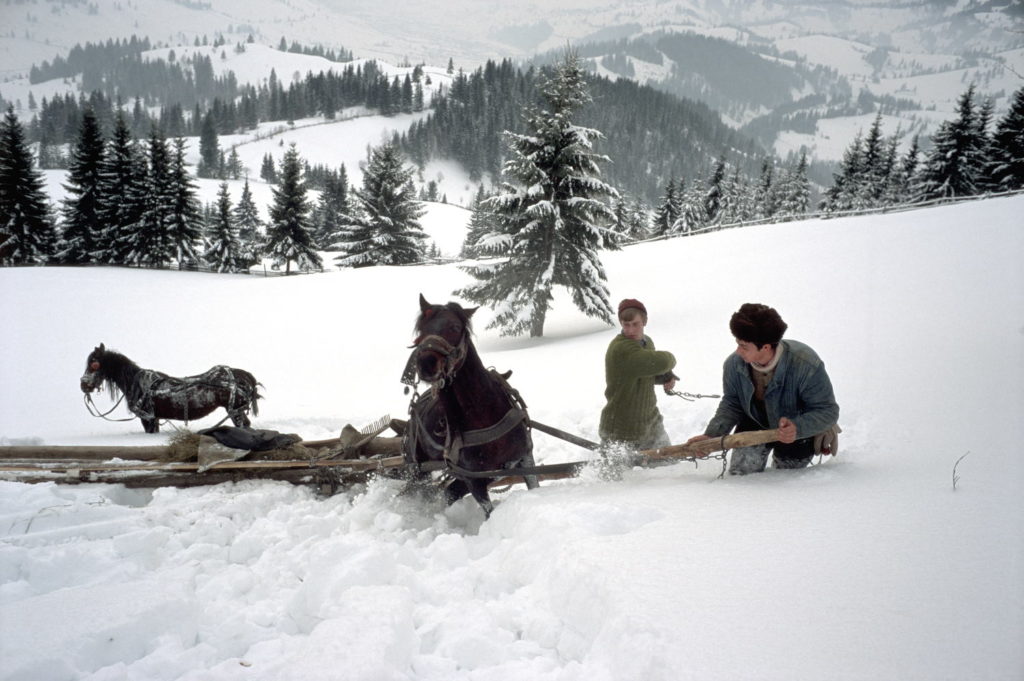
“Well, I didn’t really think they would turn up,” I said to my friend Maria. It was 5.30am and at best minus 10 Celsius. The day before, following a chance encounter in the street, our translator and guide Csilla had arranged for us to join a group of people on their sledges as they went to collect fodder from a hay barn in the hills above the village of Tarhavaspataka in Transylvania, and here they were, or so I thought.
At the start of the new millennium I visited Transylvania on three occasions spending a total of five weeks in the country including 10 days in January 2002. Working with a local translator/fixer I documented life in the Szekely region that had changed very little in literally hundreds of years.
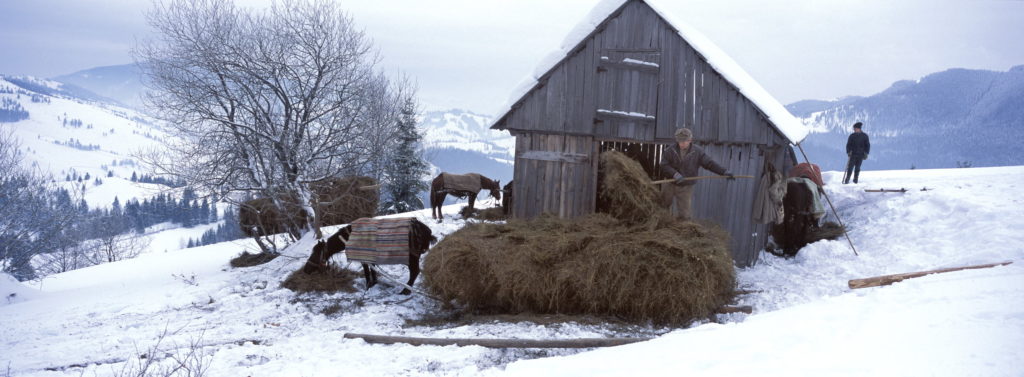
“These aren’t the people she was talking to yesterday,” Maria replied “this is another group,” she called as we split up and each jumped onto a different sledge.

Local folklore tells of the arrival of the Szekély (pronounced sekay) people in this region of Transylvania over a thousand years ago, while others carried on travelling to found what became present-day Hungary, but with the breaking up of the Austro – Hungarian empire at the end of the Great War they became isolated. They are fiercely patriotic and insistent that they are Hungarian, rather than Romanian, in spite of their geographical location.
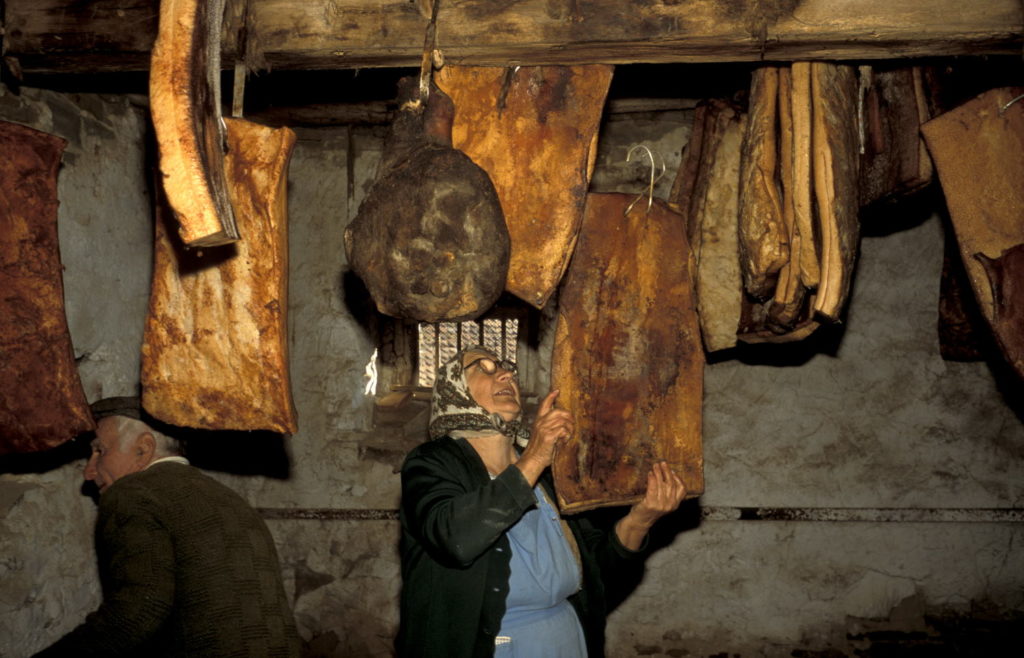
It was not at all comfortable balancing on the back of the sledge, which was little more than a few long poles bound together, guided at the front by what was to all intents and purposes an over-engineered child’s toboggan.
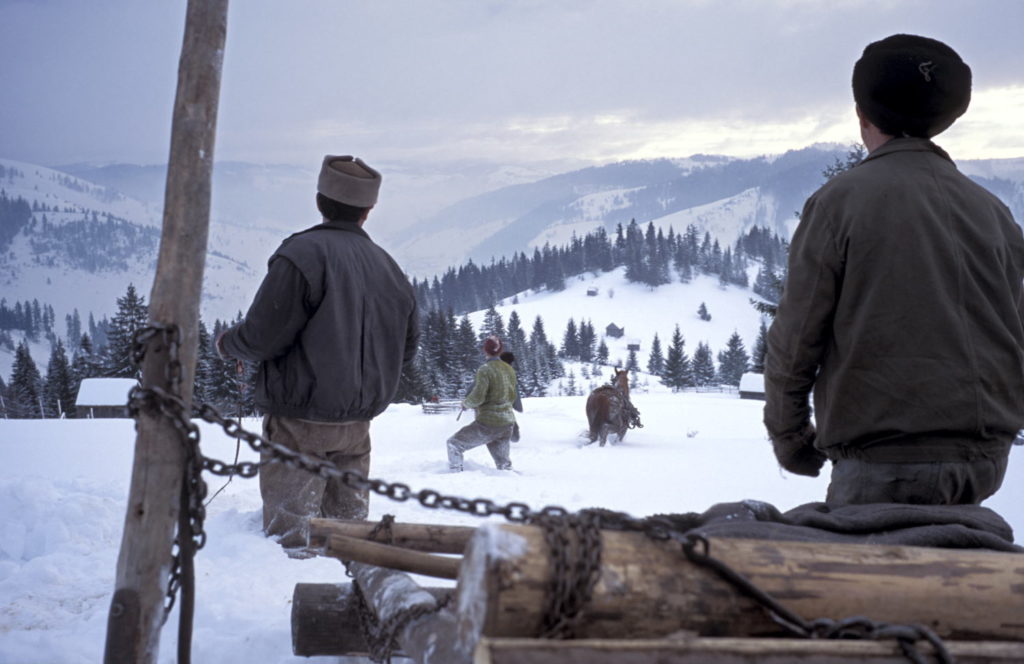
For about an hour the horses walked and trotted along the valley bottom pulling the five sledges. Then, when we got to the hills we got off and walked in the deepening snow. It was hard going and sweat was pouring off me as we trudged on, our feet sinking as much as a foot with each step. Suddenly the horse pulling the lead sledge fell onto its side, sinking into the metre-deep snow. The only way to get the horse back up was to release it from its harness, as they did, the horse took the opportunity to bolt, leaving everyone momentarily worried. But it didn’t go far, in snow this deep it just wasn’t worth the effort of running. A few minutes later, the horse was re-harnessed and we were back on our way.
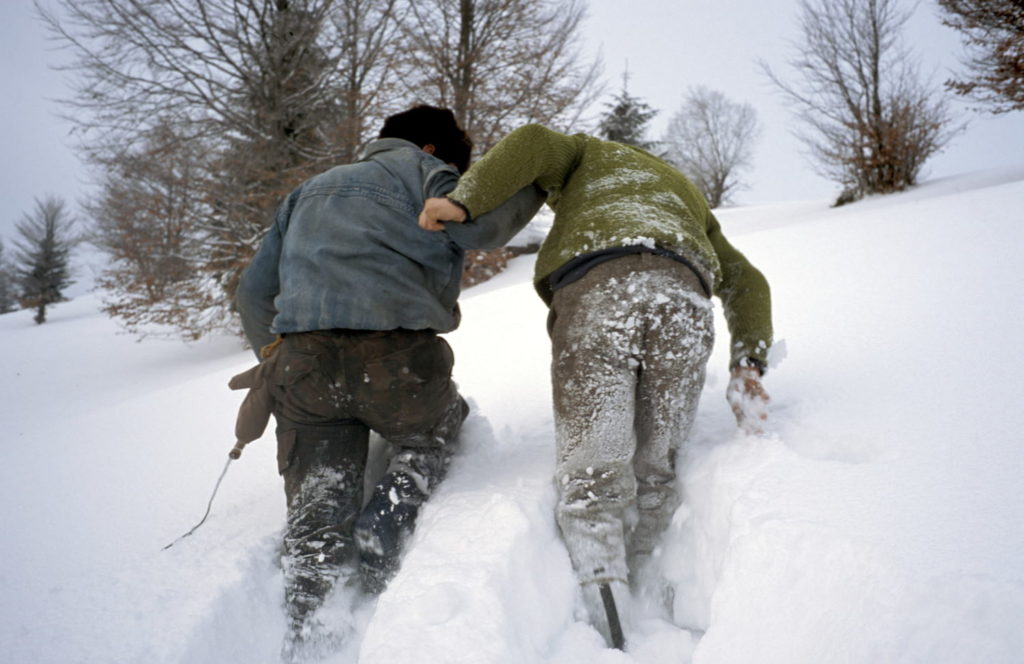
Several of the other horses fell as well as the going got steeper. Eventually, the only two-horse-sledge in the group of five took the lead to cut a path through the untouched landscape. Even beating the horses with a whip and occasionally a chain eventually failed to persuade them to go any further and we came to a standstill with the steepest part of the hill still ahead of us. “Small problem,” I said to one of the men who I had learned spoke a little English. “Big problem,” he replied.

Two of the men linked arms and walked up the hillside cutting a path for the horses. Progress was slow and getting slower but at last, we could see the hay barn only a few hundred metres above us. Half an hour later we were there. Without a break, they immediately dug out the barn doors and started to load hay onto the five sledges one by one. By midday, the hay was loaded and they sat in the barn eating their lunch of homemade bread, cheese and szalonna (fatrich bacon), provided by the owner of the barn.

Although the decades of communism brought collectivisation of farms throughout most of Romania, as elsewhere in the Soviet block, there is little evidence that it ever happened in this part of the country. In summer the unfenced landscape looks like a chessboard of strip farming, patches of yellow, green and brown, ploughed by horse and tended by the whole family. At higher elevations, shepherded flocks of sheep graze the hills, guarded by dogs that keep the bears at bay. The flocks are often made up of the sheep from several families, the shepherds being paid with a proportion of the cheese they produce.
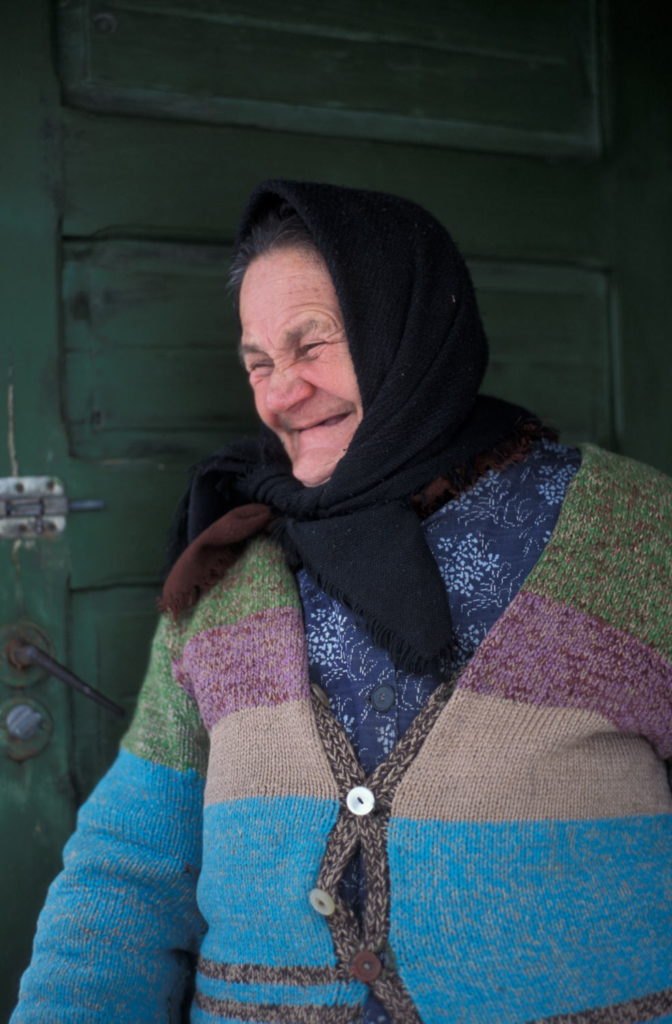
Religion still plays a central role in life, with many fortified churches throughout the region being a testament to harder times. The village of Szekélyderz, however, is unique, certainly in the Szekély region and possibly Europe.
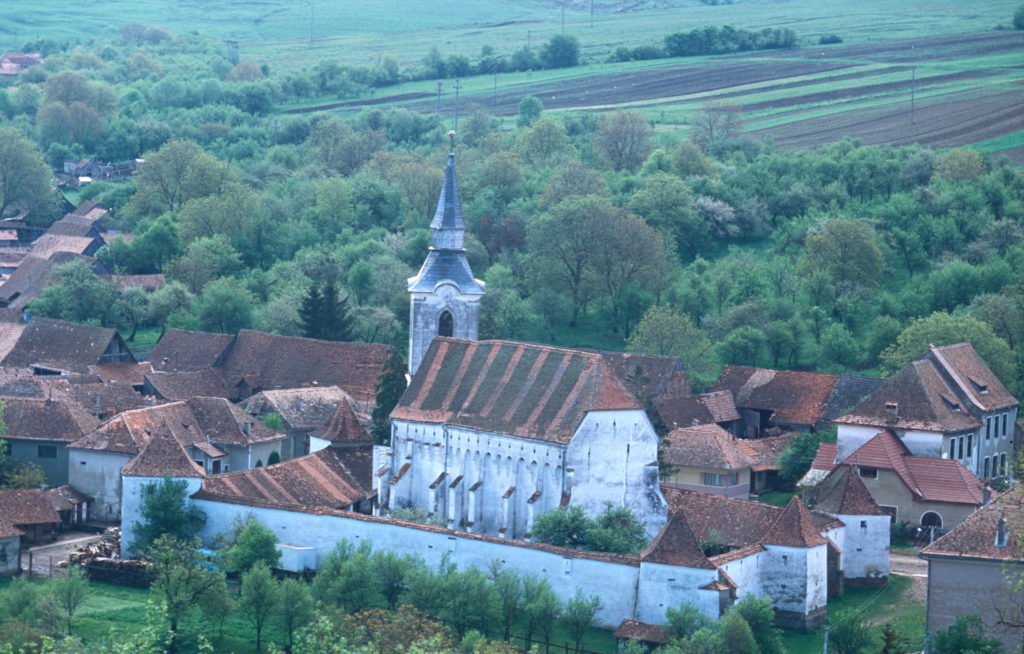
The church is used regularly for worship but the twenty foot high fortifications and five towers that were built over 400 years ago as protection against marauding Turks and Tartars are still used for their original purpose of storing food and valued possessions.

Every Wednesday at seven o'clock the fortifications are opened and villagers come either carrying huge sides of bacon to leave in the whitewashed towers or just with a sharp knife and a bag, to cut a chunk off what they have already placed in store. Big wooden boxes between the towers hold wheat for bread making and other grain for animal feed. One we were told contained a dowry, but no one had ever seen it visited so its owner remains unknown.

“How did an Englishman ever find our village,” one local exclaimed. Tourism here is virtually unknown. The few places to stay are both cheap, in English terms, and basic. On several occasions, we stayed in private houses. Arriving on foot in one village in the late afternoon we soon discovered that there was nowhere to stay. We were eventually directed to a private house whose owner sometimes put travellers up for the night. We were made very welcome but provided our own food, which we cooked on her stove, while she lit a tiny woodburner, heating water so that we could all take a bath.

During my visit I saw engineers upgrading the telephone system, bringing direct dialling to many of the villages for the first time and with it the possibility of internet access. The EU and, more enthusiastically, Hungary is funding development in the region.
In time cars will dominate the high streets and fridges and freezers will replace the need for the towers and fortifications in Szekélyderz. Elements of the Szekély culture will inevitably be lost but life will become easier. And who can deny them that?
